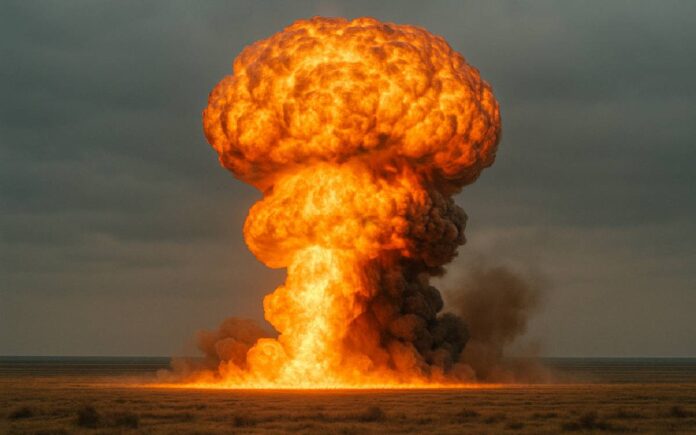Beijing – In a groundbreaking advancement in military technology, China has successfully tested a new hydrogen-based bomb that does not rely on nuclear materials but delivers destruction through sheer heat and combustion. Developed by the China State Shipbuilding Corporation (CSSC), this next-generation weapon marks a significant shift in the country’s defense strategy, potentially reducing its reliance on traditional nuclear weapons.
The new bomb utilizes magnesium hydride, a silver-colored powder capable of storing large volumes of hydrogen. The two-kilogram prototype was ignited using a small conventional explosive, causing the magnesium hydride to heat rapidly and release hydrogen gas. Upon mixing with air, the hydrogen ignites and forms an intense fireball with temperatures exceeding 1,000°C. This heat can burn for more than two seconds—significantly longer than standard TNT explosions—resulting in broader and more sustained destruction.
According to researcher Wang Juefeng and his team, “It takes very little energy for a hydrogen gas explosion. Its flame spreads very quickly and covers a large area”. The rapid dispersal of flames combined with high thermal output makes this bomb particularly effective in covering wide target zones. Unlike nuclear weapons, this device relies purely on chemical reactions, eliminating radiation fallout while maintaining severe destructive capabilities.
One of the most alarming features of this weapon is its ability to generate unimaginable heat without nuclear detonation. While its explosive force is around 40% less than TNT, its thermal damage potential is far greater. In testing, it produced a blast pressure of 428.43 kilopascals just two meters from the detonation point. The extended duration of the fireball increases its ability to incinerate targets, making it one of the most dangerous non-nuclear explosives ever developed.
The use of hydrogen storage material made from magnesium positions this bomb as a potential game-changer. Its efficiency, power, and clean combustion could redefine battlefield weaponry. The Chinese military now holds a powerful and terrifying new tool—one that could change the dynamics of future warfare.
With global military analysts closely monitoring developments, China’s hydrogen bomb may signal a shift toward thermochemical warfare—one where fire and pressure, rather than nuclear fallout, dominate the battlefield.



